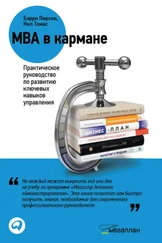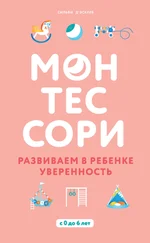Lev Semenovich Vygotsky, “Imagination and Creativity in Childhood,” Journal of Russian & East European Psychology 42, no. 1 (2004): 7–97, DOI: 10.1080/10610405.2004.11059210.
Dias, “Creativity Conference.”
Robert J. Sternberg, ed., Handbook of Creativity (Cambridge: Cambridge University Press, 1998).
Robert Franken, Human Motivation (Pacific Grove, CA: Brooks/Cole, 1993), 396.
Alfred F. Carlozzi, Kay S. Bull, Gregory T. Eells, and John D. Hurlburt, “Empathy as Related to Creativity, Dogmatism, and Expressiveness,” Journal of Psychology 129, no. 4 (1994): 365–373, DOI: 10.1080/00223980.1995.9914974.
Jean Decety and Philip L. Jackson, “The Functional Architecture of Human Empathy,” Behavioral and Cognitive Neuroscience Reviews 3, no. 2 (2004): 71–100, DOI: 10.1177/1534582304267187.
Henry C. Evrard, Thomas Forro, and Nikos K. Logothetis, “Von Economo Neurons in the Anterior Insula of the Macaque Monkey,” Neuron 74, no. 3 (2012): 482–489, DOI: 10.1016/j.neuron.2012.03.003.
Micaela Santos et al., “Von Economo Neurons in Autism: A Stereologic Study of the Frontoinsular Cortex in Children,” Brain Research 1380 (2011): 206–217, DOI: 10.1016/j.brainres.2010.08.067.
Jaime Craig and Simon Baron-Cohen, “Creativity and Imagination in Autism and Asperger Syndrome,” Journal of Autism and Developmental Disorders 29, no. 4 (1999): 319–326, DOI: 10.1023/a:1022163403479.
Jason Low, Elizabeth Goddard, and Joseph Melser, “Generativity and Imagination in Autism Spectrum Disorder: Evidence from Individual Differences in Children’s Impossible Entity Drawings,” British Journal of Developmental Psychology 27, no. 2 (2009): 425–444, DOI: 10.1348/026151008x334728..
Luigi F. Agnati et al., “The Neurobiology of Imagination: Possible Role of Interaction-Dominant Dynamics and Default Mode Network,” Frontiers in Psychology 4 (2013): 296, DOI: 10.3389 /fpsyg.2013.00296.
Jean Decety and Julie Grezes, “The Power of Simulation: Imagining One’s Own and Other’s Behavior,” Brain Research 1079, no. 1 (2006): 4–14, DOI: 10.1016/j.brainres.2005.12.115.
David B. Hay et al., “Using Drawings of the Brain Cell to Exhibit Expertise in Neuroscience: Exploring the Boundaries of Experimental Culture,” Science Education 97, no. 3 (2013): 468–491, DOI: 10.1002/sce.21055.
Mark H. Davis and H. Alan Oathout, “Maintenance of Satisfaction in Romantic Relationships: Empathy and Relational Competence,” Journal of Personality and Social Psychology 53, no. 2 (1987): 397, DOI: 10.1037/0022–3514.53.2.397.
F. Giorgia Paleari, Camillo Regalia, and Frank Fincham, “Marital Quality, Forgiveness, Empathy, and Rumination: A Longitudinal Analysis,” Personality and Social Psychology Bulletin 31, no. 3 (2005): 368–378, DOI: 10.1177/0146167204271597.
Janet B. Kellett, Ronald H. Humphrey, and Randall G. Sleeth, “Empathy and the Emergence of Task and Relations Leaders,” Leadership Quarterly 17, no. 2 (2006): 146–162, DOI: 10.1016/j.leaqua.2005.12.003.
Thomas J. Long and Edward W. Schultz, “Empathy: A Quality of an Effective Group Leader,” Psychological Reports 32, no. 3 (1973): 699–705.
Rebecca P. Ang and Dion H. Goh, “Cyberbullying among Adolescents: The Role of Affective and Cognitive Empathy, and Gender,” Child Psychiatry & Human Development 41, no. 4 (2010): 387–397, DOI: 10.1007/s10578-010-0176-3.
Gianluca Gini et al., “Determinants of Adolescents’ Active Defending and Passive Bystanding Behavior in Bullying,” Journal of Adolescence 31, no. 1 (2008): 93–105, DOI: 10.1016/j.adolescence.2007.05.002.
Minet de Wied, Susan J. T. Branje, and Wim H. J. Meeus, “Empathy and Conflict Resolution in Friendship Relations among Adolescents,” Aggressive Behavior 33, no. 1 (2007): 48–55, DOI: 10.1002/ab.20166.
L. Melita Prati et al., “Emotional Intelligence, Leadership Effectiveness, and Team Outcomes,” International Journal of Organizational Analysis 11, no. 1 (2003): 21–40, DOI: 10.1108/eb028961.
Elizabeth W. Dunn, Lara B. Aknin, and Michael I. Norton, “Prosocial Spending and Happiness: Using Money to Benefit Others Pays Off,” Current Directions in Psychological Science 23, no. 1 (2014): 41–47, DOI: 10.1177/0963721413512503.
Cassie Mogilner, Zoe Chance, and Michael I. Norton, “Giving Time Gives You Time,” Psychological Science 23, no. 10 (2012): 1233–1238, DOI: 10.1177/0956797612442551.
Loren Toussaint and Jon R. Webb, “Theoretical and Empirical Connections Between Forgiveness, Mental Health, and Well-Being,” in Handbook of Forgiveness, ed. Everett L. Worthington Jr. (New York: Routledge, 2005), 349–362.
Dean M. Busby and Brandt C. Gardner, “How Do I Analyze Thee? Let Me Count the Ways: Considering Empathy in Couple Relationships Using Self and Partner Ratings,” Family Process 47, no. 2 (2008): 229–242, DOI: 10.1111/j.1545–5300.2008.00250.x.
Duncan Cramer and Sophia Jowett, “Perceived Empathy, Accurate Empathy and Relationship Satisfaction in Heterosexual Couples,” Journal of Social and Personal Relationships 27, no. 3 (2010): 327–349, DOI: 10.1177/0265407509348384.
Davis and Oathout, “Maintenance of Satisfaction,” 397–410.
Tess Byrd O’Brien et al., “Couples Coping with Stress: The Role of Empathic Responding,” European Psychologist 14, no. 1 (2009): 18–28, DOI: 10.1027/1016–9040.14.1.18.
Hui Liu and Debra J. Umberson, “The Times They Are a Changin’: Marital Status and Health Differentials from 1972 to 2003,” Journal of Health and Social Behavior 49, no. 3 (2008): 239–253, DOI: 10.1177/002214650804900301.
Phillip T. Marucha, Janice K. Kiecolt-Glaser, and Mehrdad Favagehi, “Mucosal Wound Healing Is Impaired by Examination Stress,” Psychosomatic Medicine 60, no. 3 (1998): 362–365, DOI: 10.1097/00006842–199805000–00025.
Janice K. Kiecolt-Glaser, Jean-Philippe Gouin, and Liisa Hantsoo, “Close Relationships, Inflammation, and Health,” Neuroscience & Biobehavioral Reviews 35, no. 1 (2010): 33–38, DOI: 10.1016/j.neubiorev.2009.09.003.
Sara Konrath et al., “Motives for Volunteering Are Associated with Mortality Risk in Older Adults,” Health Psychology 31, no. 1 (2012): 87, DOI: 10.1037/a0025226.
Michael J. Poulin et al., “Giving to Others and the Association Between Stress and Mortality,” American Journal of Public Health 103, no. 9 (2013): 1649–1655, DOI: 10.2105/ajph.2012.300876.
Andrew Steptoe and Jane Wardle, “Positive Affect Measured Using Ecological Momentary Assessment and Survival in Older Men and Women,” Proceedings of the National Academy of Sciences 108, no. 45 (2011): 18244–18248, DOI: 10.1073/pnas.1110892108.
Читать дальше












